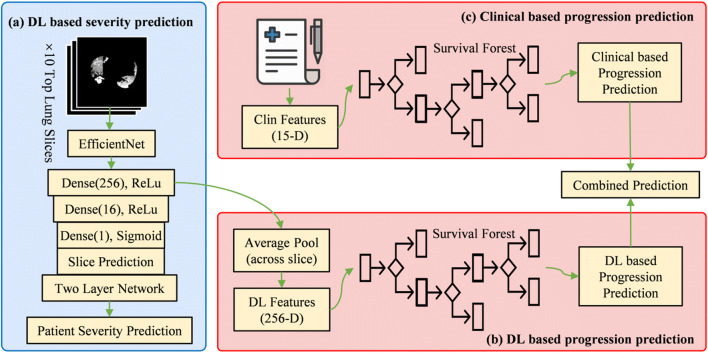Fig. 2.
Illustration of our analysis pipeline. The pipeline includes a severity prediction stage and two progression prediction branches. (a) Deep learning (DL)–based severity prediction. The top 10 segmented lung slices by largest area of pathology were used as input to EfficientNet to predict disease severity based on individual slices, and then pooled to predict severity at the patient level. (b) DL-based progression prediction. In this branch, 256-D DL features from the model were aggregated via an average pool layer for each patient. Then, a random survival forest model was optimized based on the DL features to assign risk scores to different subjects. (c) Clinical (Clin) based progression prediction. In this branch, 15 clinical features extracted from demographic recordings were input to another survival forest model to assign risk scores to different subjects. Finally, for each patient, the DL-based prediction and Clin-based prediction were combined to predict progression for each patient

